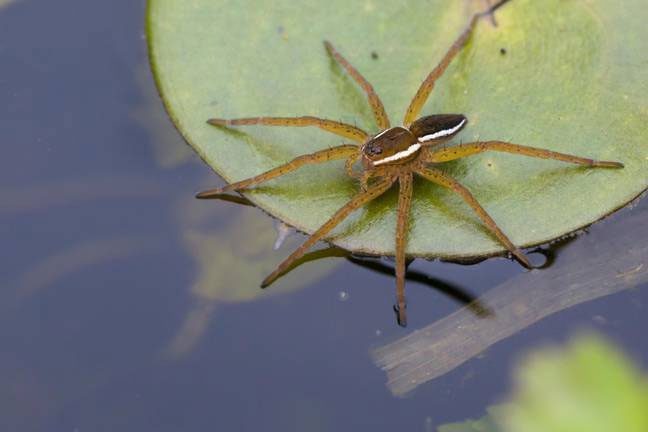Giant spiders the size of an adult’s palm are rising in the UK.
According to the Suffolk and Sussex Wildlife Trust, these are giant house spiders, which were once on the brink of extinction but have made a comeback thanks to conservation efforts.
For many, the hairy, large appearance of these spiders can be frightening. However, since giant house spiders are not venomous, scientists believe they pose no real threat.
They typically grow to a length of up to 20mm with a leg span of 70mm. Although giant house spiders are the worst nightmare for other spiders and some small prey, fortunately, they do not harm humans.

This is the largest spider species among the 660 spider species in the UK.
Experts say that giant house spiders have dark bodies with cream stripes on their sides. This species is the largest among the 660 spider species found in the UK.
Residents in Cheshire, England, are quite worried and frightened by the appearance of these giant spiders. They have very long legs, which can easily scare those seeing them for the first time. Some spiders are even as large as mice.
Giant house spiders raise their young in webs that resemble crystal. They thrive in ditch environments that are conducive to creating webs for raising young and provide a plentiful source of prey.
Tim Strudwick, an expert at the Royal Society for the Prevention of Cruelty to Animals, stated: “This is one of the rarest invertebrates in the UK. We are truly proud to see the spiders in the process of revival.”
The females are impressively sized, elegant, and quite beautiful. This species typically appears in marshy ditches and is relatively shy. They can be easily found from June to September when the mature females have young.
As of 2010, only three populations of giant house spiders were reported in the UK. In 2012, scientists released spiders into a reserve at Strumpshaw Fen in Norfolk Broads in hopes that they would thrive.
However, it wasn’t until a few years later that they noticed a change, with more spiders appearing. Throughout the season from July to October 2014, the number of nursery webs was only 184.


















































